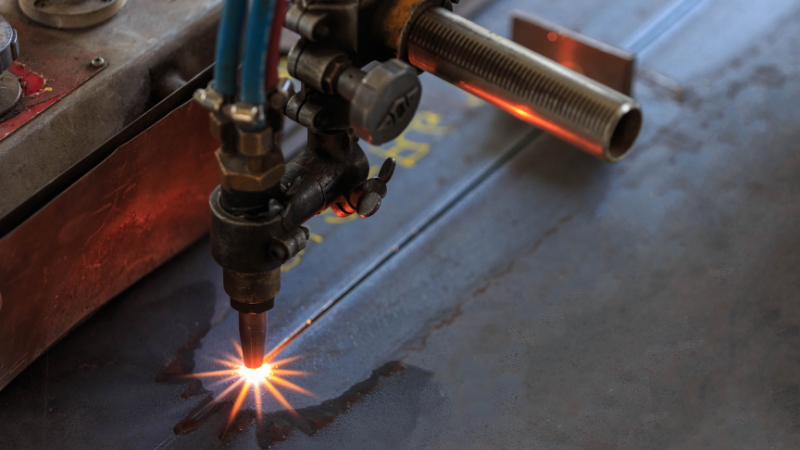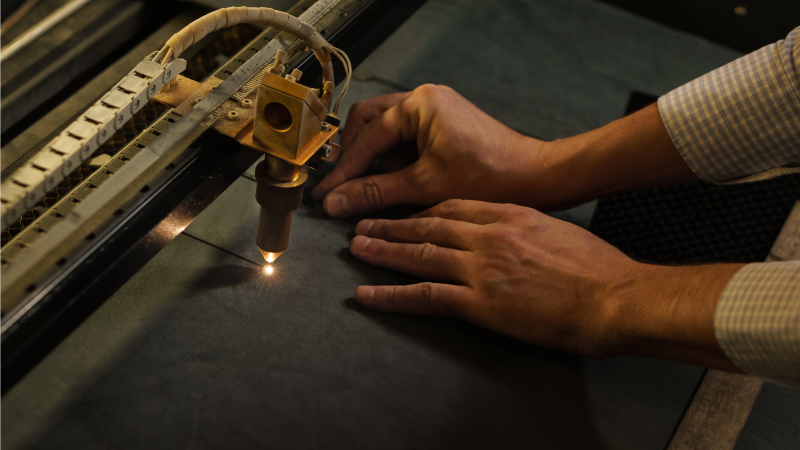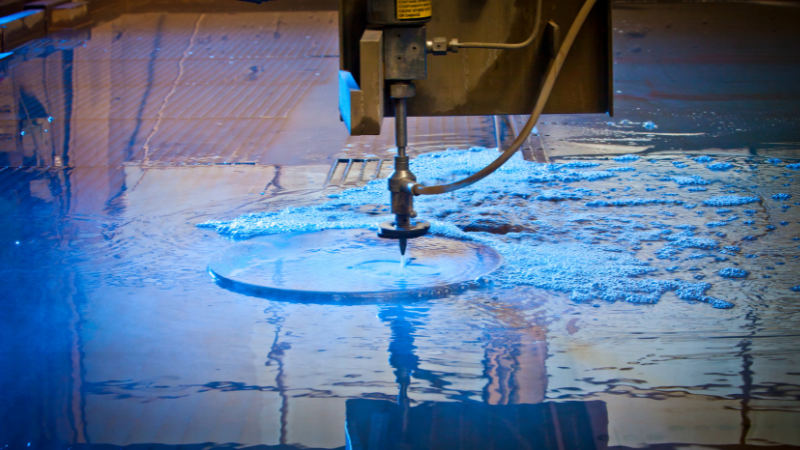Have you ever found yourself in a situation where you needed to cut something, but had no idea which cutting process to use? It can be quite perplexing, with various techniques and methods available. But fear not!
In this comprehensive guide, we will delve into the importance of selecting the right cutting process, provide an overview of different cutting techniques, and introduce the most widely used material for laser cutting: sheet metal laser cutting.
Understanding Different Cutting Processes
Cutting is an essential aspect of various industries, and choosing the right cutting process is crucial for achieving the desired shape.
I. Overview of Traditional Cutting Methods
- Saw cutting: A widely used method that involves using a saw blade to make precise cuts in materials such as wood, metal, or concrete.
- Flame cutting: Utilizes high temperatures generated by a flame to melt or burn through materials like metal.

II. Introduction to Advanced Cutting Technologies
- Laser cutting: A machining process, that utilizes lasers to melt, burn, or vaporize the material being cut. It is a part of computer numerical control machining and requires specific tool materials.

- Sublimation cutting: Uses heat to vaporize solid materials without passing through a liquid phase, resulting in minimal thermal damage.
- Mechanized cutting equipment: Incorporates automated machinery capable of performing complex cuts with high precision and efficiency.
- Vaporization cutting: Similar to sublimation cutting, but uses higher power lasers to vaporize materials rapidly.
Understanding the advantages and disadvantages of different cutting processes allows you to make informed decisions based on your specific needs. By evaluating the aspects thoroughly, you can optimize your operations and achieve superior cutting performance.
Do You Have Any Questions?
Let Us Solve Your Problem
Exploring Laser Cutting Technology and Techniques
Laser cutting is a versatile method that has gained popularity across various industries due to its precision and efficiency. Understanding how laser cutting works, the advantages it offers over other processes, and the applications where it excels can help you improve production efficiency.
How Laser Cutting Works
- Laser cutting utilizes a concentrated beam of light, or laser, to cut through materials.
- The laser beam is focused on a specific point on the material’s surface, heating it until the heat-affected zone melts or vaporizes. This vaporization cutting method is known as fusion cutting, which is an alternative to flame cutting for metal cutting.
- A computer-controlled system guides the laser beam along the desired path, creating intricate cuts with high accuracy.
Advantages of Laser Cutting over Other Methods
- Laser cutting, especially fiber lasers provide exceptional precision provides exceptional precision, allowing for intricate designs and fine details.
- It offers a non-contact cutting process, minimizing material distortion and reducing the need for post-processing.
- Compared to traditional methods like plasma or waterjet cutting, laser technology enables faster production times and increased productivity. Here are the articles that compare laser cutting with different methods: Laser Cutting VS. Plasma Cutting, and Laser Cutting vs. Water Jet.
- Laser cutting machines, also known as mechanized cutting equipment, are highly efficient for machining various materials. These cutting tools can handle metals, plastics, wood, fabric, and more in machine tools.

Industries that Benefit from Laser Cutting
Laser cutting finds extensive use in various industries due to its versatility.
- Sheet metal fabrication: Laser cutters are frequently used in machining and sheet metal processing for creating precise cuts in components like brackets or enclosures. Laser cutters are mechanized cutting equipment that uses a cutting tool to cut through the metal on a cutting table.
- Automotive industry: Laser technology plays a crucial role in manufacturing automobile parts such as exhaust systems or body panels with intricate designs.
- Jewelry making: Metal laser cutting allows jewelers to create intricate patterns on precious metals with high precision.
- Electronics manufacturing: Laser technology aids in producing circuit boards by accurately etching copper layers.
Factors to Consider When Choosing a Cutting Process
There are several factors that need to be taken into consideration. These factors can help determine the most suitable method for your specific needs. Here are some key points to keep in mind.
1. Material Type and Thickness Considerations
The type of material you are working with and its maximum thickness plays a crucial role in selecting the appropriate cutting process. Different materials require different techniques for optimal results. For example:
- Metals may require laser cutting or plasma cutting.
- Wood might be best suited for sawing or milling machines.
- Fabrics could benefit from methods like die-cutting or waterjet cutting.
2. Precision Requirements for the Project
Another important factor to consider is the level of precision required for your project. Some cutting processes offer higher accuracy than others. Depending on your needs, you may want to consider:
- Laser cutting, which provides exceptional precision and clean cuts.
- Waterjet cutting, is known for its ability to achieve intricate shapes with minimal distortion.
- CNC machining, which offers high precision through computer-controlled movements.

3. Cost Analysis and Production Volume Evaluation
Cost is always a significant consideration when choosing a cutting process. You should evaluate both upfront costs and long-term expenses associated with each method. It’s essential to assess production volume requirements.
- For low-volume projects, manual methods like shearing or hand sawing may be cost-effective.
- High-volume production often benefits from automated processes such as laser cutting, CNC routing, and machining. These processes utilize specialized tools made from materials like cemented carbide and speed steel.
Considering these factors will help you make an informed decision based on your unique needs and circumstances. You can choose the right cutting process that ensures optimal results while staying within budget constraints.
Do You Have Any Questions?
Let Us Solve Your Problem
Sheet Metal Cutting: Considerations and Techniques
Laser cutting is widely regarded as one of the most efficient and precise methods for cutting sheet metal. It involves the use of a high-powered laser beam that is focused onto the surface of the material, causing it to melt, burn, or vaporize. This manufacturing process creates a clean and accurate cut through the sheet metal.
Several Advantages of Sheet Metal Laser Cutting
- Precision and Accuracy: Laser cutting offers exceptional precision, allowing for intricate and complex designs to be cut with high accuracy. The laser beam can be controlled with great precision, resulting in clean edges and minimal distortion.
- Versatility: Laser cutting can be used on a wide range of sheet metal materials, including stainless steel, aluminum, brass, and copper. It is suitable for various thicknesses, from thin sheets to thicker plates.
- Speed and Efficiency: Laser cutting is a fast and efficient process, enabling quick production turnaround times. The high cutting speed and rapid positioning of the laser beam contribute to its efficiency.
- Minimal Material Waste: Laser cutting produces narrow kerf widths, which means less material is wasted during the cutting process. This makes laser cutting a cost-effective option for sheet metal fabrication, as it utilizes mechanized cutting equipment and laser vaporization cutting tools.
- Non-Contact Process: Laser cutting is a non-contact method, which means there is no physical force applied to the material during cutting. This reduces the risk of damage to the sheet metal and allows for greater flexibility in cutting complex shapes.

Factors to Consider
- Material thickness: Different cutting processes are suitable for varying thicknesses of sheet metal. Ensure you select a method that aligns with your material’s thickness.
- Precision requirements: If your project demands high precision, laser or plasma cutting may be preferable over manual methods like tin snips.
- Heat sensitivity: Some materials, such as aluminum, are heat-sensitive and can warp or deform when exposed to high temperatures. In such cases, waterjet cutting can be an excellent choice as it minimizes heat transfer.
- Production volume: For large-scale production, automated processes like power shears or CNC (Computer Numerical Control) machines offer increased efficiency and consistency.
In conclusion, laser cutting is a highly effective and widely used method for cutting sheet metal. Its precision, versatility, and efficiency make it an ideal choice for various applications in industries such as automotive, aerospace, electronics, and more. When considering sheet metal cutting options, laser cutting should be carefully evaluated to ensure the best results.
Choosing the Right Cutting Process: Step-by-Step Guide
Choosing the right cutting process for your project is crucial. This will not only save time and improve your efficiency but also get good cutting results. Here are some tips for choosing the right cutting process.
Step 1: Evaluating Project Requirements
- Determine the type of workpiece material to be cut, such as metal, wood, or fabric.
- Consider the thickness and hardness of the material.
- Identify any specific shapes or designs needed for the project.
Step 2: Assessing Available Resources
- Take stock of the tools and equipment already on hand.
- Evaluate their capabilities and suitability for the cutting process.
- Consider factors like budget and time constraints.
Step 3: Comparing Different Cutting Processes Based on Criteria
- Research various cutting processes available, such as laser cutting, waterjet cutting, or plasma cutting.
- Compare each process based on criteria like precision, speed, cost-effectiveness, and versatility.
- Look for reviews or case studies that highlight success in similar projects.

By following this step-by-step guide, you can choose the right cutting process for your project with confidence. Remember to evaluate your project requirements thoroughly and assess available resources before comparing different cutting processes based on relevant criteria.
FAQs
1. Can I use laser cutting for materials other than metal?
Absolutely! While laser cutting is commonly associated with metal materials, it can also be used on various non-metal materials such as wood, acrylic, fabric, plastic, and more. However, keep in mind that different materials may require specific settings or techniques for optimal results.
2. How do I determine which thickness of sheet metal is suitable for laser cutting?
The suitability of a particular sheet metal thickness for laser cutting depends on several factors such as the power of your laser machine and the desired precision of the cut. Generally, most laser machines can handle sheet metals ranging from 0.5mm to 25mm in thickness.
It’s recommended to consult with your laser cutting service provider or refer to the machine specifications for precise guidelines.
3. Can I combine different cutting processes for more complex projects?
Absolutely! In fact, combining different cutting processes can often yield superior results for complex projects.
For example, you might use laser cutting for intricate designs and then employ waterjet cutting for thicker materials that lasers struggle with. Don’t hesitate to explore hybrid approaches and leverage the strengths of each process to achieve optimal outcomes for your unique needs.
Do You Have Any Questions?
Let Us Solve Your Problem
Conclusion
You’ve now gained a comprehensive understanding of different cutting processes and the factors to consider when choosing the right one. Armed with this knowledge, you can confidently navigate the world of cutting edge technology and techniques.
But remember, finding the perfect cutting process for your needs is just the first step. It’s important to stay up-to-date with advancements in laser cutting technology and explore new techniques as they emerge. So go ahead, and put your newfound knowledge into action!
Get the Best Cutting Machine For Your Business
Laser cutting is one of the most important cutting processes and is well worth the investment. If you need high quality laser equipment like a fiber laser cutter, please contact Baison, we can provide professional application evaluation, to help you better project production.





